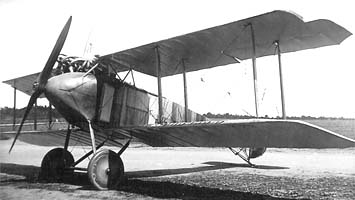Fokker D.IV
Appearance
| D.IV | |
|---|---|

| |
| Role | Fighter |
| Manufacturer | Fokker |
| Designer | Martin Kreutzer |
| Introduction | 1916[1] |
| Primary users | German Army Swedish Air Force |
| Number built | 44 |
The Fokker D.IV was a German fighter biplane of World War I, a development of the D.I.[2][3]
Development
The Fokker D.IV had a more powerful Mercedes D.III engine, and the first Fokker front-line design to use ailerons in place of wing warping from the start for roll control.[4]
Operational history
The aircraft was purchased in small numbers (40) by the German Army and saw service on the Western Front. The Swedish Air Force also bought four examples of the type.[1][5]
Operators
- Luftstreitkrafte - 40 aircraft.
- Swedish Air Force - Four aircraft.
Specifications
General characteristics
- Crew: one pilot
- Length: 6.30 m (21 ft 0 in)
- Wingspan: 9.70 m (31 ft 10 in)
- Height: 2.45 m (8 ft 0 in)
- Wing area: 21.0 m2 (226 sq ft)
- Empty weight: 600 kg (1,320 lb)
- Gross weight: 840 kg (1,848 lb)
- Powerplant: 1 × Mercedes D.III straight-6 , 120 kW (160 hp)
Performance
- Maximum speed: 160 km/h (99 mph, 86 kn) [4]
- Range: 220 km (137 mi, 119 nmi)
- Service ceiling: 5,000 m (16,400 ft)
- Rate of climb: 5.6 m/s (1,100 ft/min) 20 minutes to 13,100 Ft.
Armament
- 2 × fixed, forward-firing 7.92 mm (.312 in) LMG 08/15 machine guns
References
Wikimedia Commons has media related to Fokker D.IV.
Notes
Bibliography
- Green, William and Gordon Swanborough. The Complete Book of Fighters. London: Greenwich Editions, 1994. ISBN 0-8317-3939-8.
- Lamberton, W. M. Fighter Aircraft of the 1914-1918 War. Letchworth, Herts, UK: Harleyford Publications Limited, 1960.
- Taylor, Michael J. H. Jane's Encyclopedia of Aviation. London: Studio Editions, 1989. ISBN 0-517-69186-8.
- Wagner, Ray and Heinz Nowarra. German Combat Planes: A Comprehensive Survey and History of the Development of German Military Aircraft from 1914 to 1945. New York: Doubleday, 1971.
- World Aircraft Information Files: File 894 Sheet 40–41. London: Bright Star Publishing, 1989.
